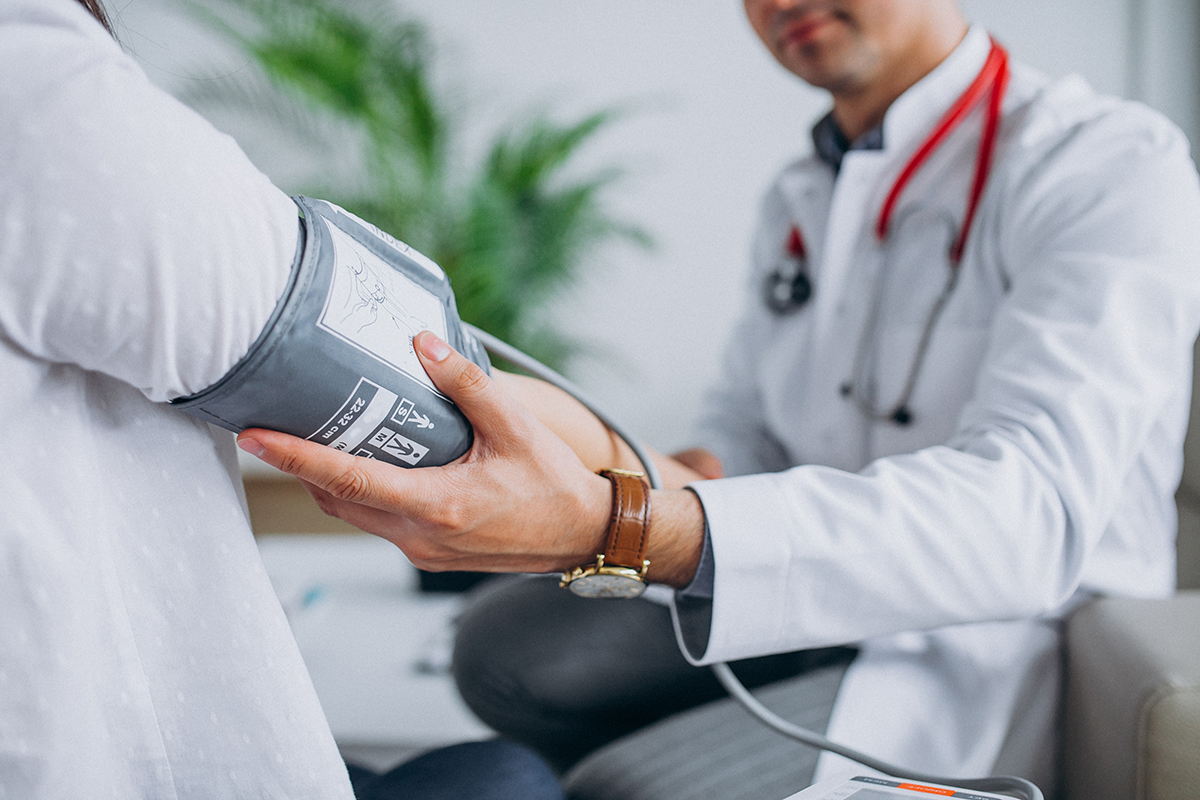
Nearly half of Americans have high blood pressure which is a risk factor for heart disease and stroke, the leading causes of death in the United States. The great news is that with few exceptions blood pressure levels are heavily tied to lifestyle factors like exercise and diet. To provide some concrete tips, we’ve looked at the research and compiled this list of 17 ways to control or lower your blood pressure.
1. Lose Weight
Losing excess weight is one of the most impactful things you can do to improve your blood pressure. Increases in body weight (beyond the healthy range) directly lead to increases in blood pressure. The relationship is so strong that bearing excess weight could be 65-75% of the risk for high blood pressure.
Plus losing weight will improve your health and quality of life in a number of other ways. Being overweight increases your risk of sleep apnea which itself further raises blood pressure. In contrast, losing weight will help you to sleep better, have more energy, and decrease the stress on your joints.
2. Cut Back on Added Sugar and Refined Carbohydrates

Salt has long been the subject of blame when it comes to high blood pressure but as new data emerges, sugar seems to be the bigger enemy. In this 2014 study, sugar, particularly fructose, was found to increase blood pressure by 5.6 mm Hg diastolic and 6.9 mm Hg systolic over an 8-week period.
Digging into the history of sugar, it should come as no surprise that our bodies have trouble dealing with too much. 300 years ago, humans only consumed around 1-2 pounds of sugar per year vs an estimated 77-152 pounds annually today. One bright spot is that these negative effects mainly apply to added sugar. Fructose consumed in the form of whole fruits didn’t seem to have these negative effects.
3. Focus on Healthy Protein
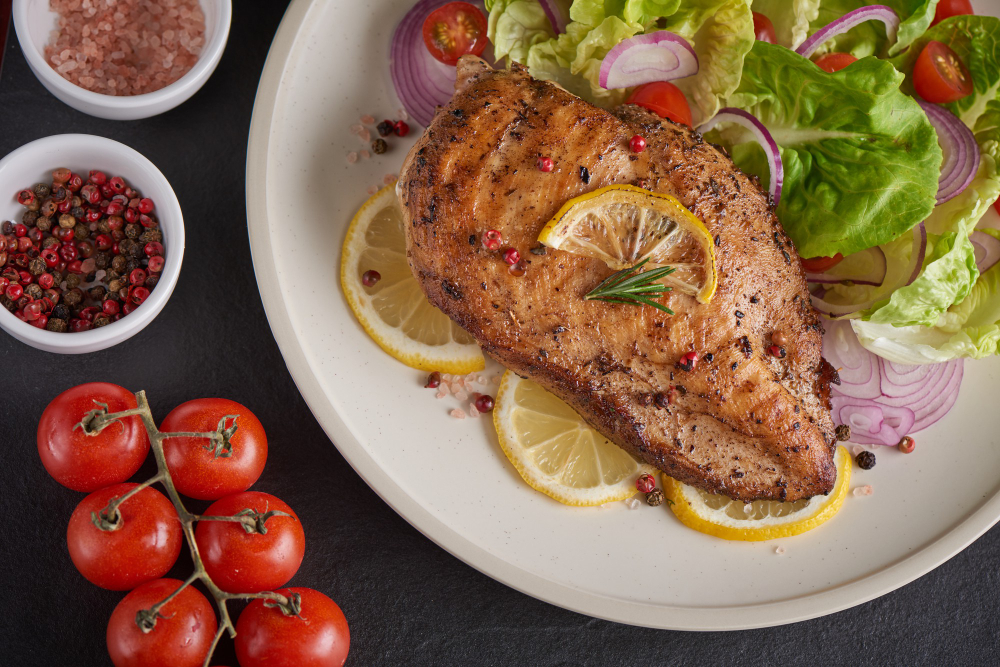
This one might have been a bit predictable after saying to decrease sugar. Those who eat more protein and fiber have been shown to be at a lower risk of developing high blood pressure. In studies, benefits were markedly so among those who ate 100 grams of protein or more per day.
Other healthy, lean protein sources to focus on include.
- Chicken breasts
- Lean cuts of beef like sirloin, top sirloin, and eye of round.
- Beans and legumes
4. Stay Hydrated
Staying properly hydrated is one of the easiest ways to maintain your blood pressure. Blood is mostly water so if you’re dehydrated, it becomes thicker and more difficult for your heart to pump throughout your body. The relationship is direct enough that severe dehydration is cited as a direct heart attack risk.
To keep your circulatory system running smoothly you’ll want to get at least your daily recommended water intake. People who are physically active and live in dry climates should drink even more water.
5. Increase Your Potassium Intake
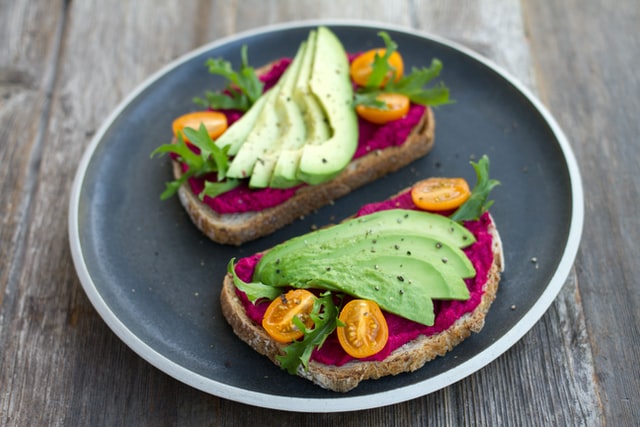
Potassium can help to lower blood pressure by countering the negative health effects of sodium. The reason this happens is the more potassium you consume, the more sodium your body releases through urine. Potassium also helps to ease tension in your blood vessel walls, which also helps to lower blood pressure.
Food sources of potassium include avocados, bananas, dried fruit, beans, lentils, and more.
The daily recommended allowance for potassium ranges from 2300-2900 milligrams for women and 3000-3400 milligrams for men. Those with Kidney Disease should approach adding potassium to their diet with caution.
6. Exercise
As one of the mainstays of healthy lifestyle advice, it might be fairly obvious that exercise can lower your blood pressure. The Mayo Clinic states that regular physical activity can lower high blood pressure by about 5 to 8 mm Hg. It’s important to maintain this physical activity to keep your blood pressure from rising again.
30 minutes of exercise per day is recommended for most people. The best types of exercise to maintain healthy blood pressure levels are aerobic exercises like walking, running, swimming, or cycling.
7. Eat a Healthy Diet
Along with exercise, eating healthy is the other piece of advice that’s often given but not well-defined. Luckily there is a specific diet that’s shown great success in helping to lower blood pressure known as the DASH diet. DASH stands for Dietary Approach to Stop Hypertension. The diet has shown a great deal of effectiveness being able to lower blood pressure for many in as little as two weeks.
DASH concentrates on foods that are rich in potassium, calcium, and magnesium but low in sodium. Specifically, it concentrates on vegetables, fruits, whole grains, fat-free or low-fat dairy products, fish, poultry, beans, and nuts. Foods that are high in saturated fat, such as fatty meats and full-fat dairy products are limited within the DASH diet framework. Check out the NIH website for a handy infographic to understand things better.
8. Consider These Supplements
Many people can get all the necessary nutrients they need from the food they eat but for some, supplements provide a handy way to fill in the gaps. A few supplements even show some benefits in lowering blood pressure.
Here’s a short list of the most recommended individual supplements to help with blood pressure.*
- Vitamin D (Source)
- B Vitamins (Source)
- CoQ10 (Source)
- Garlic (Source)
- Fish Oil (Source)
- Probiotics (Source)
- Melatonin (Source)
- Green Tea (Source)
- Ginger (Source)
9. Quit Smoking
According to a study cited in the NIH, quitting smoking (if you do) may be the single most important thing you can do to lower your blood pressure and protect your overall health. Smoking cigarettes leads to impairment of endothelial function, arterial stiffness, inflammation, and, lipid modification.
Put simply, many if not most cardiovascular conditions are worsened by smoking cigarettes. While the link between smoking and hypertension hasn’t been proven conclusively, smoking has been shown to increase stiffness in the arteries which can lead to increased blood pressure.
It’s understandable that quitting is often easier said than done. Here are a few quick tips to help you quit smoking.
10. Cut out Alcohol
Moderate alcohol consumption, especially of wine, is thought to provide health benefits such as reducing your risk of heart disease and stroke. As with fat, sugar, and salt, too much alcohol leads to long-term increases in blood pressure levels along with a host of other adverse health effects.
How much is too much?
Heavy alcohol use is defined as more than three drinks a day for women, and four for men. The term “binge drinking'' has come to be used quite casually but it’s defined as four or more drinks within two hours for women and five or more drinks within two hours for men.
To get into the finer details of how alcohol affects blood pressure, browse this article from Medical News Today.
11. Get Adequate Sleep
Getting enough sleep is important for a number of reasons including immune function, weight management, concentration, hormone balance, and more. Chronic lack of sleep is strongly correlated with increased blood pressure.
There are two primary explanations for the link between lack of sleep and high blood pressure. Your body's blood pressure drops slightly when you’re sleeping. If you’re spending more hours of the day awake, then you’re going to spend more time with your blood pressure elevated and over time it could lead to hypertension. The other possibility is that sleep may help manage the production of hormones that regulate stress and metabolism. Sleeping too little over time could cause hormonal changes that lead to elevated blood pressure.
12. Control Your Stress

When we experience stressful situations, our bodies release a surge of hormones that raise our blood pressure by causing the heart to beat faster and blood vessels to narrow. Proving a definitive link between chronic stress and hypertension is difficult though.
The important thing to do when it comes to stress is to deal with it in a healthy manner. Many of the ways people cope with stress contribute negatively to health and lead to high blood pressure such as smoking cigarettes, drinking alcohol, or indulging in “comfort food.”
To deal with stress in the moment, check out our full list on ways to destress. For chronic stress, it’s going to be helpful to consider your source of stress and whether you can mitigate it even if it ultimately means changing careers, getting out of a relationship, or setting more rigid boundaries.
13. Dark Chocolate
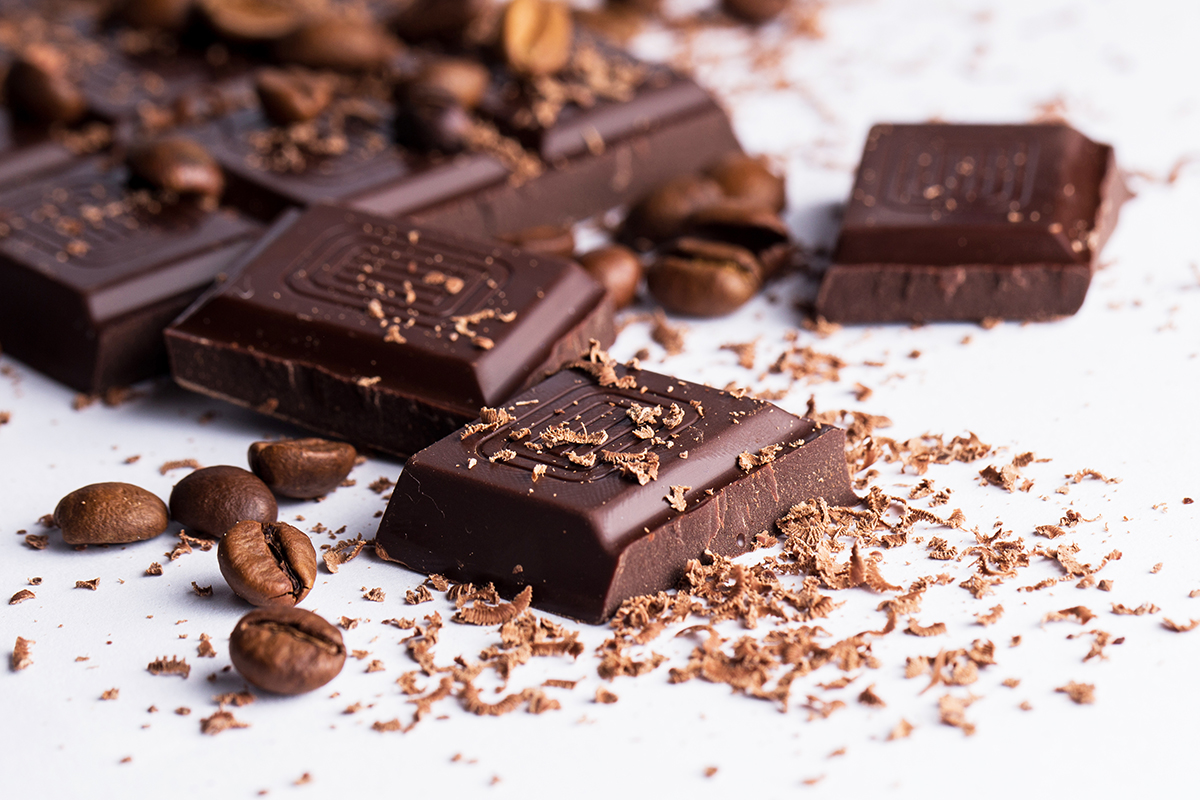
Dark chocolate, specifically ones with a cacao content of 50% and higher, has been shown to promote better blood pressure levels and contribute to better overall heart health.
Dark chocolate’s polyphenols have been shown to increase the formation of endothelial nitric oxide, which relaxes and widens blood vessels and may lower blood pressure as a result.
14. Careful with Caffeine
Caffeine can cause a short spike in blood pressure although the severity of this effect varies greatly between individuals. You’ll be glad to learn that caffeine doesn’t seem to raise overall blood pressure over time.
The Mayo Clinic recommends that if you have high blood pressure or take certain medications to speak to your doctor about whether you should cut back on or eliminate caffeine. For most people, the FDA recommends limiting caffeine to less than 400 milligrams (roughly the amount in 18-20 ounces of coffee). This amount can vary according to individuals’ caffeine sensitivity.
15. Eat Polyphenol-Rich Foods
In addition to dark chocolate, many other foods also contain polyphenols. These substances are antioxidants that come from a number of plant foods. Interestingly, polyphenols are what most people attribute the blood pressure-lowering effect of the Mediterranean diet to and the most recent clinical studies seem to support this.
If you’re looking to add more polyphenols to your diet, concentrate on foods like berries, chili peppers, fruits, vegetables, and whole grains.
16. Monitor Blood Pressure Regularly and Stay in Communication with your Doctor
While you make these changes, monitoring your blood pressure regularly can help you see if and which of these interventions are working. Home monitoring devices are generally affordable and widely available without any prescription.
Communicating your findings with your physician during regular checkups will be key in helping you to control your blood pressure and preventing problems down the road.
17. Meditation

Meditation has been cited as a modest way to lower blood pressure especially increased blood pressure as a result of stress. Note that implementing well-designed studies with proper control groups has proven difficult because respondents willing to participate already believed in the benefits of meditation most of the time.
That being said, Dr. Herbert Benson, director emeritus of the Harvard-affiliated Benson-Henry Institute for Mind Body Medicine has cited a meditation technique that can elicit the relaxation response releasing nitric oxide which relaxes and widens blood vessels.
Dr. Benson recommends practicing the relaxation response twice a day, for 10 to 20 minutes, similar to what other meditation experts recommend. Here's how to do it.
- Sit in a quiet place with your eyes closed.
- Relax your muscles and silently repeat a word, phrase, sound, or short prayer of your choosing over and over.
- When stray thoughts interfere (as they will), let them come and go and return to your word, phrase, or sound.
Bottom Line
High blood pressure is one of the most prevalent health problems among Americans and a precursor to many negative cardiovascular conditions. Fortunately, there are many lifestyle changes you can make to lower your blood pressure over time. The impact of these changes may depend on genetics, medications you’re taking or other factors so check in with your doctor to develop a plan and take any medications if needed.
This article is provided for informational purposes only and is not intended to be used as medical advice. If you have immediate concerns about your health, please seek the help of your physician.
*These statements have not been evaluated by the Food and Drug Administration. Products are not intended to diagnose, treat, cure or prevent disease.




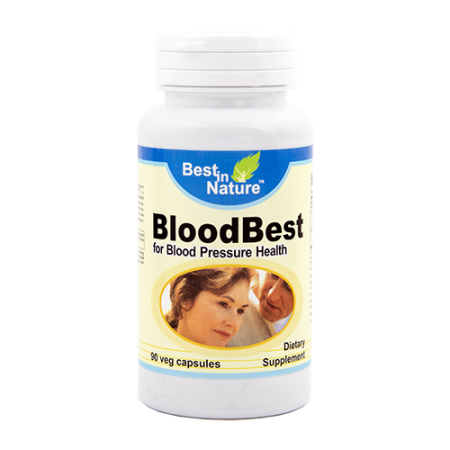
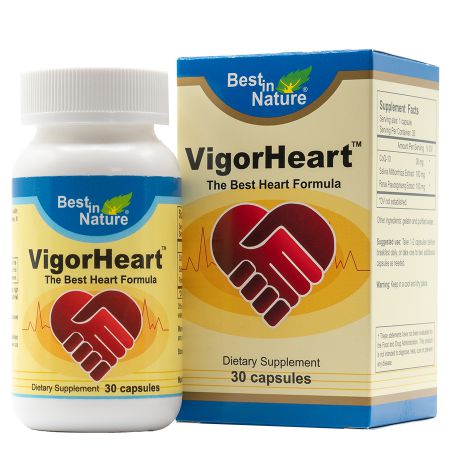
Validate your login
Sign In
Create New Account